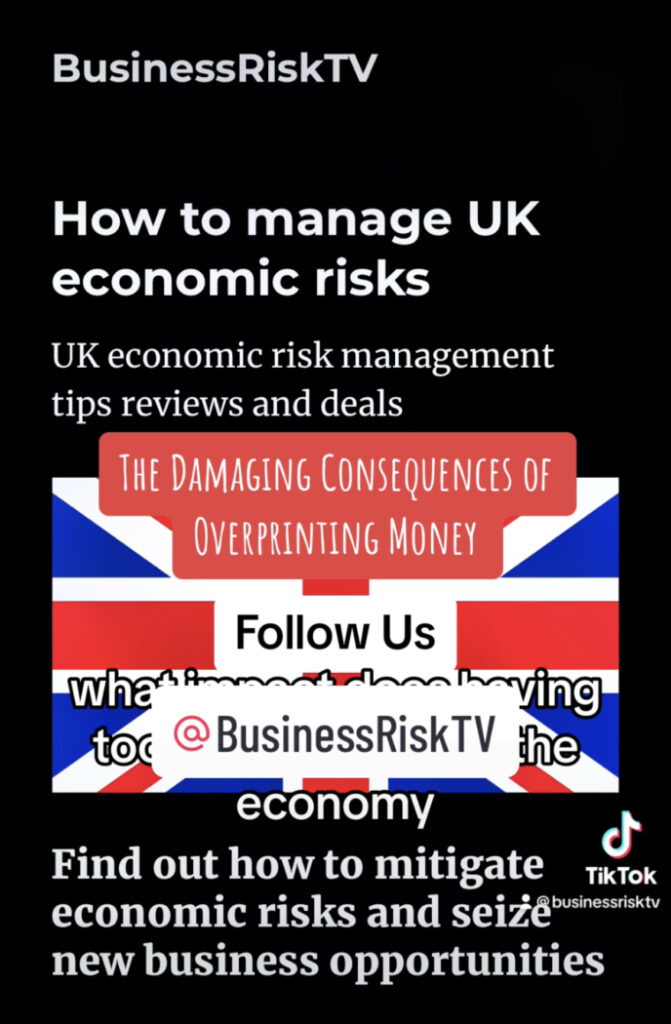The Sterling Saviour: Why America’s Woes, Not Britain’s Brawn, Bolster the Pound
Across the pond, a curious spectacle unfolds. The British pound, battered and bruised for years, has suddenly found favour, flexing its muscles against the mighty dollar in December 2023. While headlines trumpet a resurgent Britain, let’s hold the Union Jack confetti for a moment. This newfound strength has less to do with Britannia’s biceps and more to do with Uncle Sam’s wobbly ankles.
UK business leaders and consumers need to peek beyond the celebratory bunting and understand the true story behind the pound’s ascent. It’s not solely a tale of British brilliance, but rather a reflection of America’s deepening economic and political quagmire.
Debt Avalanche: When Uncle Sam Gets Buried Under Bills
America’s national debt has ballooned to astronomical heights, surpassing a staggering $30 trillion. This mountain of red ink, fueled by years of government overspending and tax cuts for the wealthy, casts a long shadow over the US economy. It cripples the government’s ability to invest in crucial infrastructure and social programs, while simultaneously saddling future generations with a crushing burden.
This debt tsunami isn’t limited to Uncle Sam’s coffers. American consumers are drowning in their own ocean of debt, with student loans, mortgages, and credit card balances reaching record levels. This mountain of personal debt hampers economic growth, as consumers tighten their belts and reduce spending.
The Fragile Colossus: Cracks in the American Banking System
The 2008 financial crisis left deep scars on America’s banking system. While regulations have tightened, concerns linger about the stability of some financial institutions. The recent turbulence in the cryptocurrency market and the potential implosion of major players like FTX further erode confidence in the financial sector.
These anxieties spill over into the global financial system, impacting the dollar’s perceived safe-haven status. Investors, spooked by American financial fragilities, seek refuge in alternative currencies, including the pound.
Political Pendulum: When Washington Becomes a Wobbling Circus
American politics have become a spectacle of division and dysfunction. Hyper-partisanship and gridlock in Washington make it nearly impossible to address pressing issues like inflation, healthcare, and climate change. This political uncertainty breeds economic anxiety, further weakening the dollar’s allure.
In contrast, the UK, despite its own political challenges, appears relatively stable. Brexit anxieties have subsided, and a new Prime Minister offers a semblance of direction. This perceived stability, compared to the American political rollercoaster, makes the pound a more attractive proposition for some investors.
Britannia’s Balancing Act: Not All Roses and Tea
Let’s not paint a rosy picture for the UK either. Britain grapples with its own set of economic woes, including rising inflation, a labour shortage, and dependence on volatile global markets. The war in Ukraine and ongoing supply chain disruptions further complicate the picture.
The Bank of England’s recent interest rate hikes, aimed at curbing inflation, could also dampen economic growth. A potential recession on the horizon would undoubtedly weaken the pound.
Navigating the Currency Crossroads: Cautious Optimism for UK Businesses and Consumers
So, where does this leave UK businesses and consumers? The pound’s recent strength offers a welcome respite, but it’s not a magic bullet. Businesses should exercise caution when making currency-dependent decisions, hedging against potential fluctuations. Diversifying markets and currencies can mitigate risk and ensure long-term stability.
For consumers, the stronger pound could translate to slightly cheaper imported goods and travel. However, inflationary pressures may offset these gains. Responsible budgeting and financial planning remain crucial, regardless of the pound’s performance.
In conclusion, the pound’s December surge is less a testament to British might and more a symptom of American malaise. A confluence of debt, financial fragility, and political uncertainty across the Atlantic has pushed investors towards the perceived relative stability of the UK. However, it’s vital to remember that Britain’s own economic challenges loom large.
For UK businesses and consumers, the message is clear: embrace cautious optimism. Enjoy the currency tailwind while it lasts, but prepare for potential choppy waters ahead. Focus on building resilience, diversifying risk, and making sound financial decisions, lest the tide turn once again. Remember, currency markets are a fickle beast, and the sun rarely shines eternally on any single shore.
Get help to protect and grow your business
Subscribe for free business risk alerts and reviews
Read more business risk management articles for free





